NEWSLETTER
BE FIRST IN LINE FOR OUR NEXT RELEASE.
© 2025 TIPSTER. ALL RIGHTS RESERVED.
NEWSLETTER
BE FIRST IN LINE FOR OUR NEXT RELEASE.
Words by Shannon Michelle Bouffard
Photography by Fritz Butziek
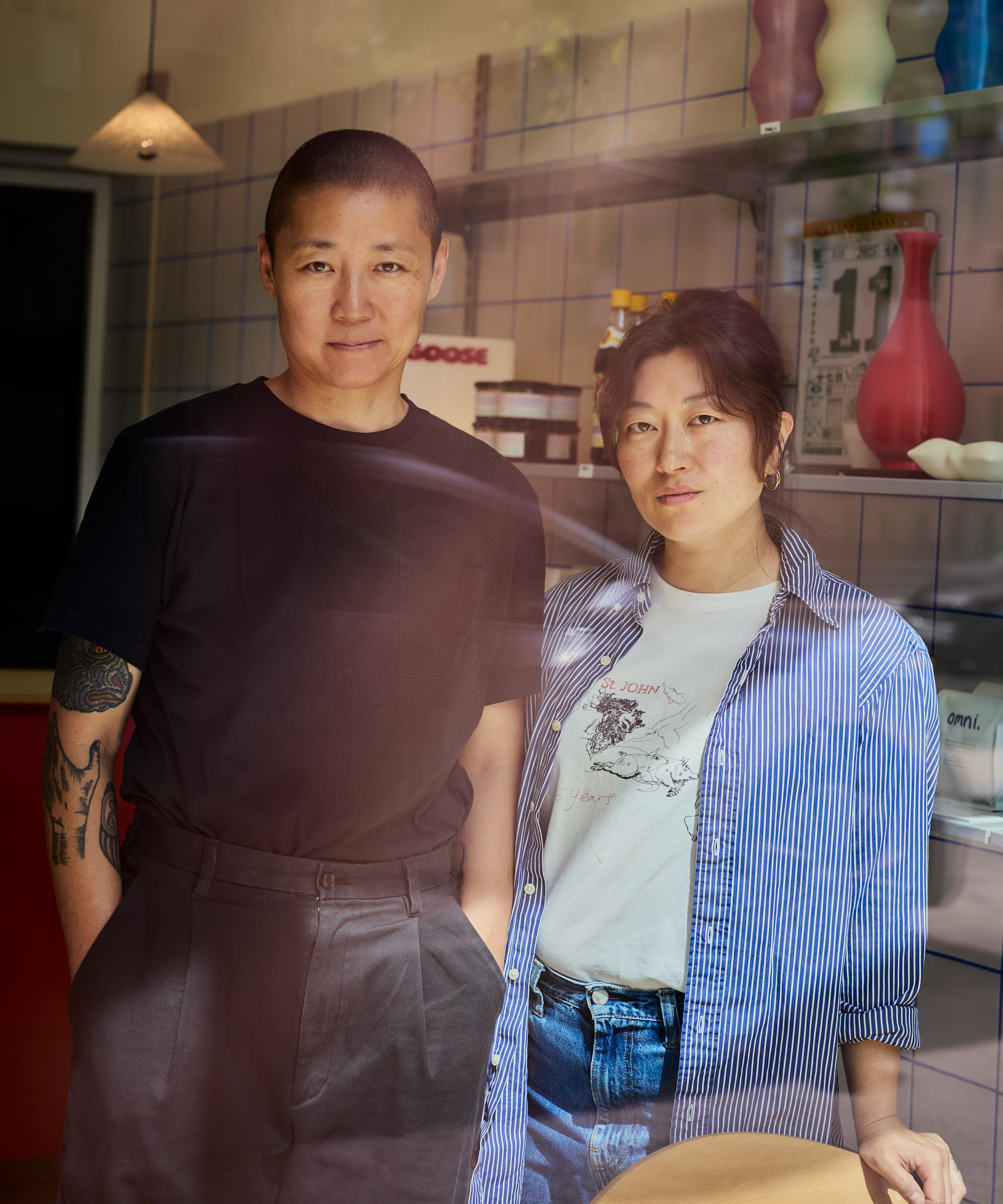
This piece is part of an ongoing series spotlighting the people and places shaping Copenhagen’s growing Asian food scene.
The pastry at Goose is on Baijie Curdt-Christiansen’s terms. “I have this whole vendetta against calling things mochi if they’re not Japanese,” she says, zigzagging a pastry bag of black sesame paste over what, at first glance, looks like a traditional Danish spandauer. “That’s sticky rice!”
Standing in Goose’s spacious production area, she adds, “Chewy, sticky, gelatinous textures are such a big part of Asian food culture. I wanted to incorporate that into a pastry people wouldn’t be afraid of—and black sesame pairs so well with sticky rice.”
Swapping the lush custard filling of Denmark’s most iconic and replicated pastry (yes, the Danish) for the sticky chew of glutinous rice is a bold move. And so it goes at Goose—sticky rice spandauer is just the beginning.
The triple-threat deli, bakery, and fermentation lab opened in Copenhagen’s Nordvest neighborhood in April with an ambitious menu that put diasporic Chinese identity—and MSG—front and center. The oft-villainized seasoning doesn’t hide here; it glazes Curdt-Christiansen’s flaky five-spice bun.
“The first time someone asked if we used MSG, I said, ‘Absolutely we do, and we’re proud of it,’” Curdt-Christiansen laughs. “We did have one guy say his girlfriend couldn’t eat MSG. I was like, oh, so she doesn’t eat potato chips or tomato sauce? I’m so sorry for you.”
The rest of the menu—viennoiseries and sandos—reflects her journey: pillow-soft milk bread (Curdt-Christiansen refuses hard crusts after years in a Danish sourdough bakery—“my mouth hurts!”); croissants filled with kaya and a slab of butter, a nod to the kaya toast she ate as a teenager in Singapore; tomato-egg sandos inspired by the Chinese comfort dish of stir-fried tomato and egg.
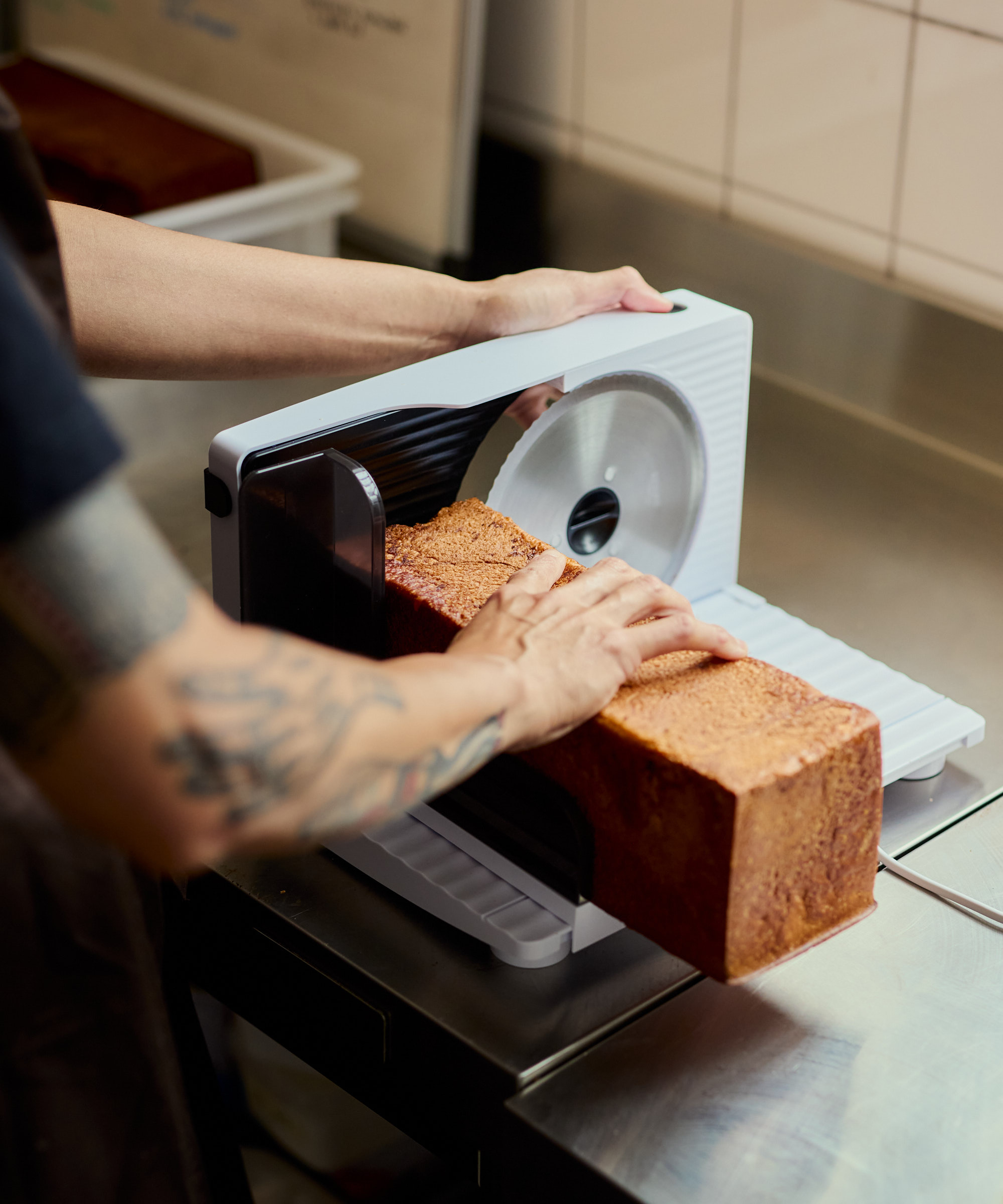
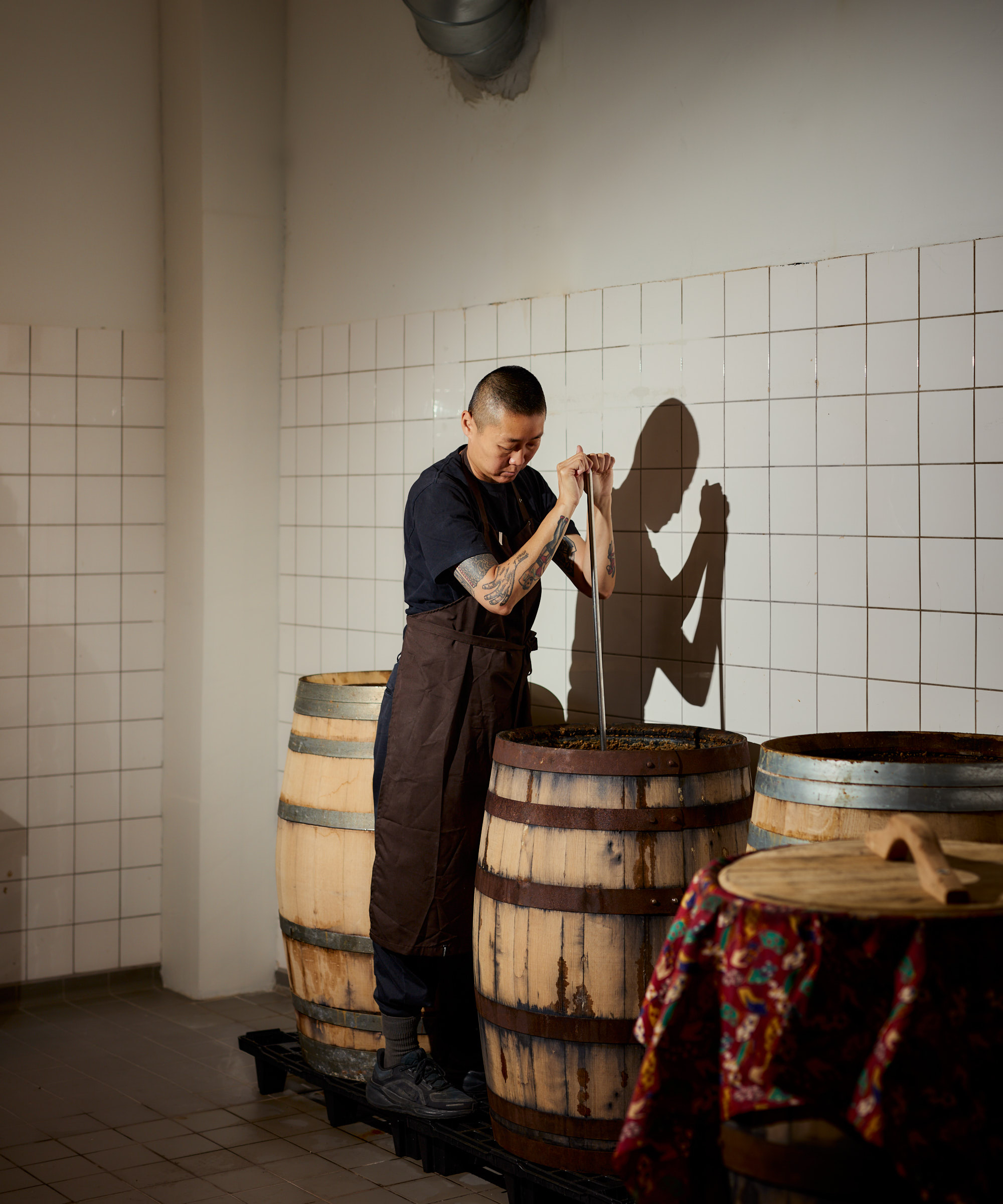
“The first time someone asked if we used MSG, I said, ‘Absolutely we do, and we’re proud of it.”
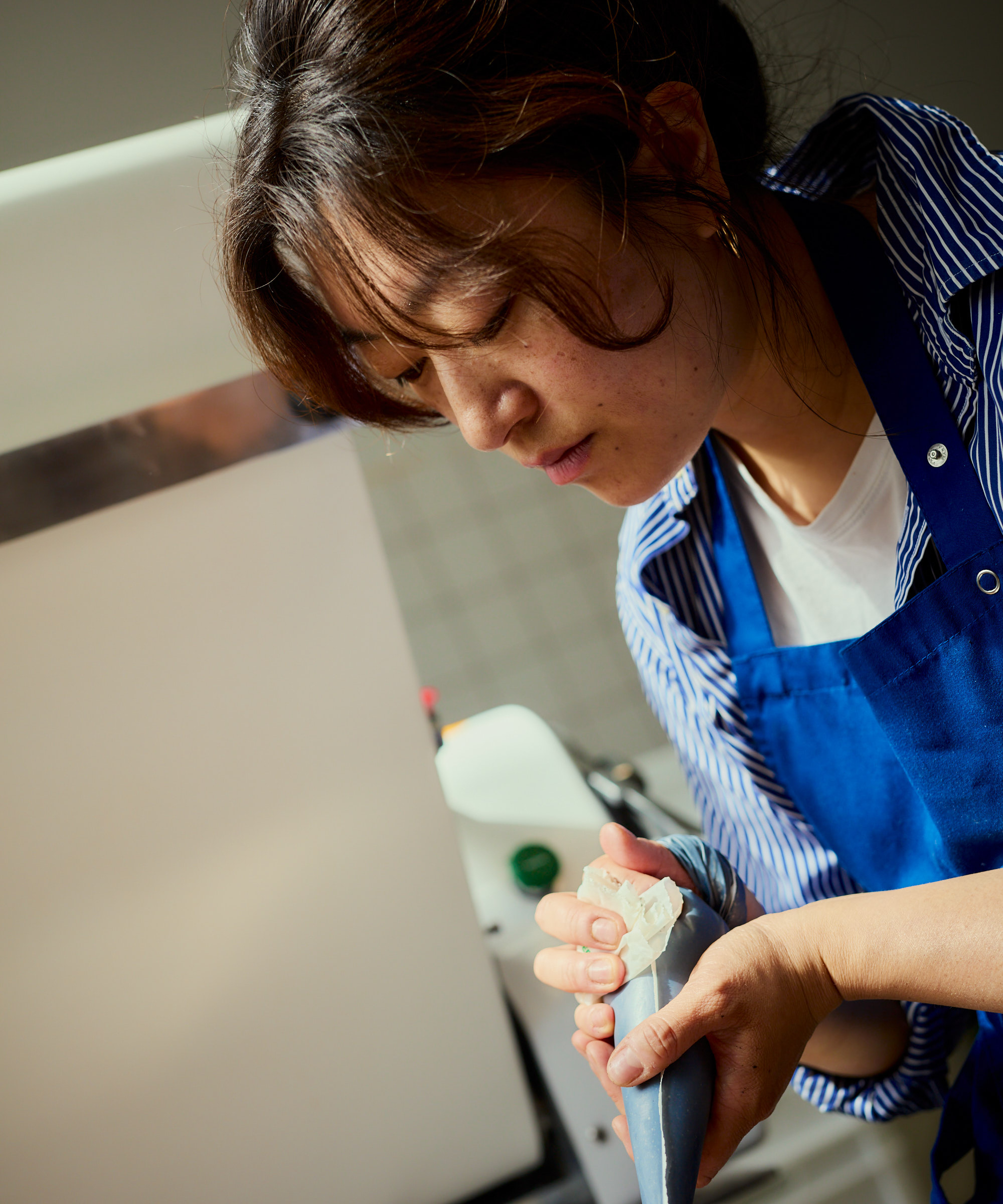
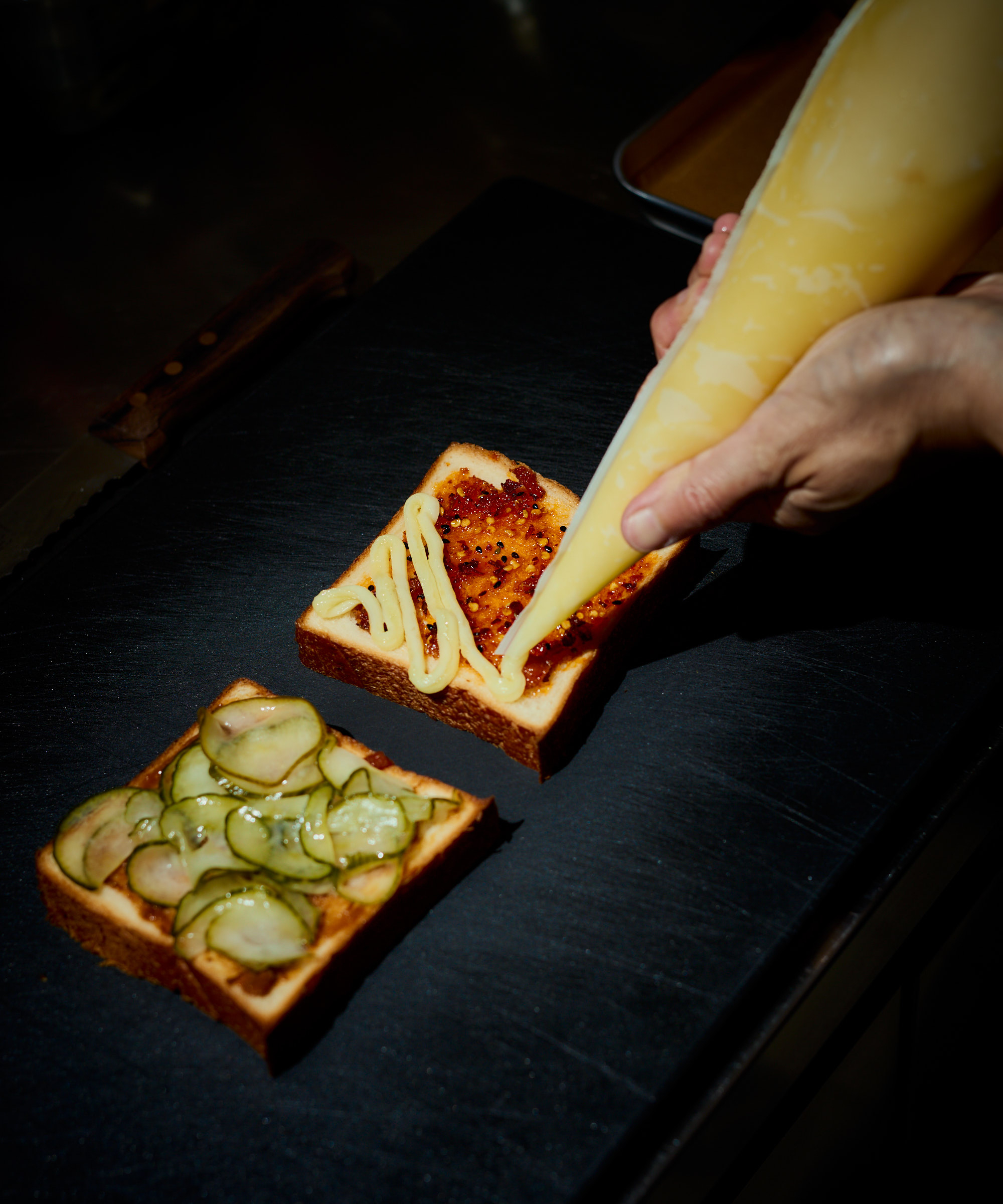
Then there’s the Joy Luck Sub: a wonton-meatloaf hybrid, pan-fried and heavy between slices of tender milk bread, its name drawn from the 1989 novel by Amy Tan. “In pop culture, The Joy Luck Club is associated with young Asian women rebelling against traditions. So I thought, why not call a sandwich the Joy Luck Sub instead of a meatball sub, even if no one gets the reference except for me?”
The name was only the starting point. “What’s the best way we can challenge two cultures at once? Let’s put a wonton into a sandwich,” Curdt-Christiansen adds. The wonton filling patty is layered with crisp shards of fried wonton skin, pickles, and a smear of chunky jiàng—a miso-adjacent condiment made with soybeans, whole barley, and spelt in Goose’s fermentation lab, overseen by co-owner Lan-xin Foo.
“In China, there’s a whole category of sauces called bànfàn jiàng, the kind you eat with rice,” Foo explains. “I kept ours chunky so people could do the same—eat it with a bowl of rice, just like my grandma would.”
Beyond the counter, Foo tends barrels of fermenting soybeans. “It smells a bit like wet socks right now,” she laughs, “but that flavor will develop into something amazing.”
She explains the science with infectious enthusiasm. “Not everyone realizes there are different grades of soy sauce.” Most commercial soy sauces are made for efficiency—produced in just a few days in factories, using powdered soybeans and a harsh chemical process, she says. “I think it’s pretty cool from a scientific standpoint, but there’s no time for flavor to develop.
At Goose, fermentation takes its time: organic European soybeans will age for months—sometimes more than a year. “As long as you think it’s ready, it’s ready. It’s your expression of the ferment. I’m looking forward to experimenting, pressing at six, nine, twelve, fifteen months, and tasting the differences.”
When it’s just right, she presses the liquid, yielding soy sauce from a porridge-like mash. About half is pulp, which doesn’t go to waste—it becomes hoisin sauce. “As a Chinese person, I can’t envision anyone from three generations ago saying, ‘You know what, I'll throw this away.’ I think they would have done everything to make use of it.” That ethos is mirrored in Goose’s chili crisp, thick and unctuous, studded with milk bread scraps reborn as croutons.
Foo’s condiments find their way into sandwiches, pastries, and the deli shelves, where customers can take a piece of Goose home.
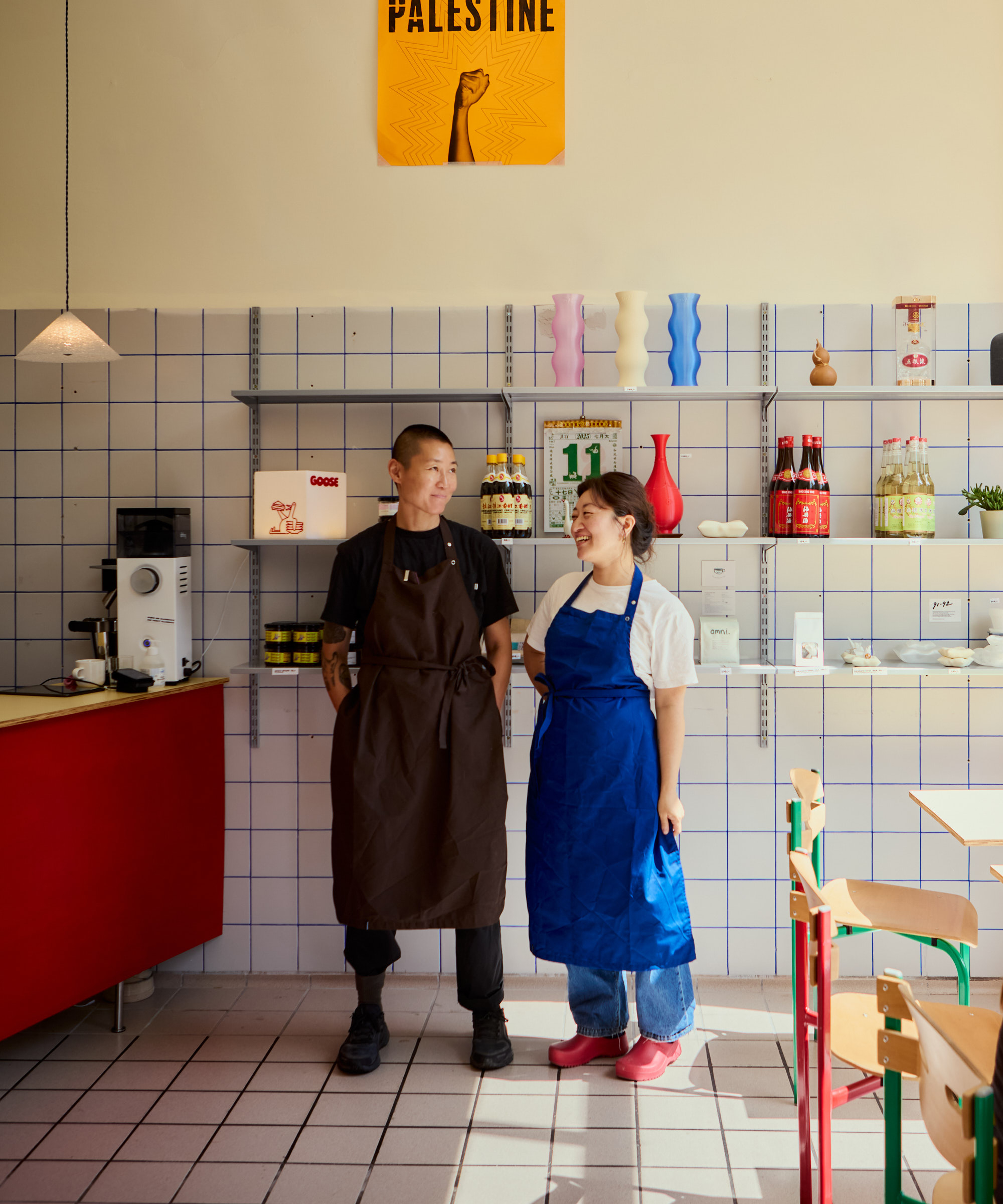
The partnership behind Goose traces back several years. The two first crossed paths when Curdt-Christiansen was managing a brewery’s now-shuttered Chinese restaurant concept. At the time, Foo was the brewmaster at a sister company.
“We were like, ‘Asian women are in charge, yay!’” Curdt-Christiansen recalls, her tone ironic, hinting at how fleeting that optimism proved to be. Yet the two stayed in touch even after the project fizzled out.
In 2022, Foo opened Foo Ferments, a space dedicated to preserving East Asian fermentation traditions with EU-grown, organic ingredients. Meanwhile, Curdt-Christiansen’s COVID-era baking hobby evolved into a full-fledged role at Bageriet B. When a space opened next door to her lab, Foo had planned to expand on her own—but joining forces with Curdt-Christiansen made more sense. From there, things moved quickly. “I didn’t have much time to work in the kitchen before we opened—the menu was just in my mind,” Curdt-Christiansen says. Menu development happened on the fly, often at friends’ pop-ups.
The name came easily. “Geese are migratory, like us,” Foo adds. “There’s a lot of Chinese imagery around geese and birds in general.”
Though five months old, Goose carries itself with the confidence of a neighborhood staple, bending but not breaking to meet the rhythm of its locals. Demand has pushed sourdough onto the menu, despite Curdt-Christiansen’s aversion. It arrives with butter and Foo’s jiàng, resisting to conform entirely—even if it’s not exactly the way grandma would have eaten it. But if she lived in the neighborhood, she probably would.
“Geese are migratory, like us”
GOOSE DELI
Tomsgårdsvej 77
2400 København